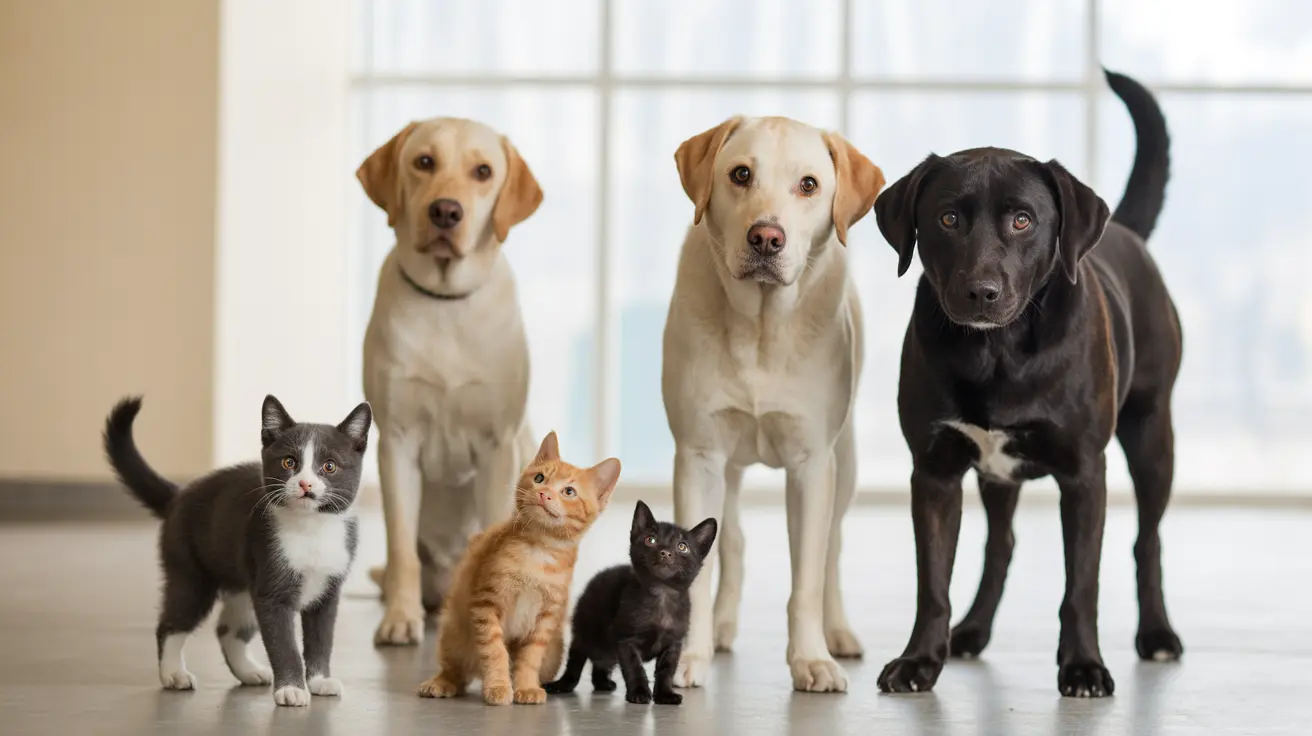Is the American Staffordshire Terrier Considered a Pit Bull?
The term "pit bull" often stirs confusion and controversy. It is not a specific breed but rather an umbrella term that refers to several dog breeds with similar ancestry and appearance. Among these breeds is the American Staffordshire Terrier, commonly known as the AmStaff. Due to their shared lineage and physical similarities, it's not unusual for people to ask: is an American Staffordshire Terrier a pit bull?
Shared History and Origins
Both the American Staffordshire Terrier and the American Pit Bull Terrier trace their origins to the 19th-century United Kingdom. Originally bred from bulldogs and terriers, these dogs were used for blood sports like bull- and bear-baiting. When these cruel practices were outlawed, the dogs were used in dog fighting rings.
Later, these breeds made their way to the United States where selective breeding refined their traits for different purposes, including companionship and work. The American Pit Bull Terrier (APBT) developed further as a working dog, while the American Staffordshire Terrier (AmStaff) began to be bred more as a companion dog.
Breed Recognition and Classification
- American Pit Bull Terrier (APBT): Recognized by the United Kennel Club (UKC).
- American Staffordshire Terrier: Recognized by the American Kennel Club (AKC).
While both originate from the same ancestral stock, their recognition by different kennel clubs and divergent breed standards have led to their classification as separate breeds.
Physical Similarities and Differences
Physically, both breeds are medium-sized, muscular, and agile. However, subtle differences exist:
- American Pit Bull Terrier: 17–22 inches in height; 30–75 pounds in weight. Tends to be more slender with more visible muscle tone.
- American Staffordshire Terrier: 18–19 inches in height; 55–70 pounds. Typically stockier with a broader head and pronounced cheek muscles.
Both dogs have short, glossy coats and come in a variety of colors. Pit Bulls can be any color except merle, while AmStaffs are often found in solid colors and brindle patterns.
Temperament and Behavior
Both breeds are loyal, intelligent, and affectionate. Well-socialized individuals are known to be friendly and enjoy interacting with people, including children. However, due to breed history, they may exhibit dog aggression, especially toward unfamiliar dogs.
Key behavioral traits include:
- Loyalty: Strong bonds with their families.
- Playfulness: High energy and enjoyment of games.
- Protectiveness: Alert and wary of strangers in some cases.
- Trainability: Respond well to positive reinforcement and early socialization.
Exercise and Enrichment Needs
These breeds have high energy requirements. Daily physical and mental stimulation is crucial to avoid behavioral problems.
- Suggested Activities: Long walks, fetch, agility training, scent work.
- Typical Energy Levels: Pit Bulls may require more intense activity than AmStaffs.
Living Conditions and Family Suitability
Neither breed thrives in apartment living unless given adequate daily exercise. They do best in homes with active families who spend time on training and play.
- Children: Typically good with kids when socialized early.
- Separation Anxiety: Can develop if left alone for long periods.
- Other Pets: Caution and early introduction are advised.
Grooming and Health
Both breeds are low-maintenance regarding grooming but may have specific health considerations.
- Grooming Needs: Weekly brushing, occasional bath, ear cleaning.
- Common Health Issues:
- Hip and elbow dysplasia
- Skin allergies (more common in Pit Bulls)
- Patellar luxation (kneecap issues)
- Progressive retinal atrophy (AmStaffs)
- Hypothyroidism (AmStaffs)
- Cerebellar ataxia (rare, in AmStaffs)
Life expectancy ranges from 12–16 years for both breeds with proper care and nutrition.
Social Perception and Misunderstandings
Both breeds suffer from stigma and are often mistakenly labeled as innately aggressive. This perception is rooted in media portrayal and historical misuse.
- Reality: Neither breed is inherently dangerous to people.
- Important Factors: Genetics, early socialization, and responsible ownership heavily influence behavior.
Responsible pet ownership through training and socialization can turn these misunderstood dogs into well-adjusted, loving family members.
Final Thoughts
In summary, while the American Staffordshire Terrier is technically its own breed, it falls under the broad category of "pit bull-type dogs". Shared ancestry, appearance, and temperament bind it closely to the American Pit Bull Terrier. For prospective dog owners, understanding the differences and similarities between these breeds is essential when considering them as companions.





